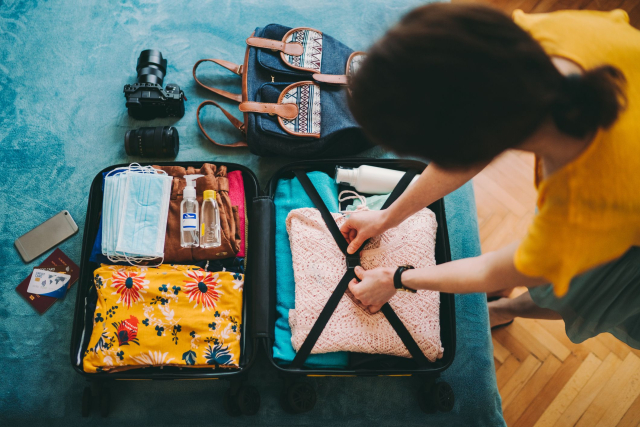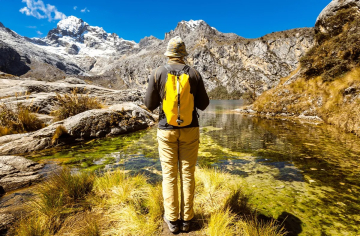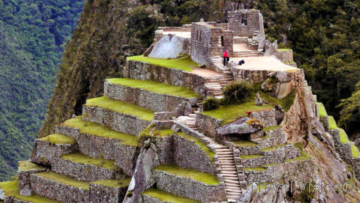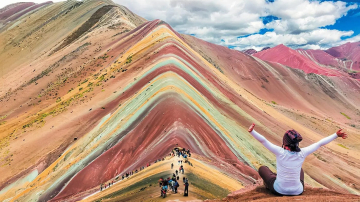Peru is a fascinating destination that offers a perfect blend of history, culture, nature and gastronomy. From the mythical city of Machu Picchu to the impressive Nazca lines and the biodiversity of the Amazon , this country captivates travelers with its richness and diversity. However, before embarking on your adventure, it is important to know some key aspects to enjoy your trip to the fullest and avoid setbacks.
In this article, we present you with seven essential things you should know before traveling to Peru. With this information, you can prepare yourself adequately and live an unforgettable experience exploring one of the most fascinating countries in South America . Below, you will find information about the climate, currency, safety and many other aspects that will make your trip more comfortable and enjoyable.
1. Climate and best time to travel
Peru has a diverse geography that influences its climate. Depending on the region you visit , you will find different types of climate:
-
Coast: Temperate and humid climate, with summer from December to March . Lima, the capital, experiences high humidity and a characteristic grey sky for most of the year.
-
Sierra: Cold weather at night and mild during the day . The best time to visit is from May to September , when there is less rain and access to tourist sites such as Machu Picchu is easier.
-
Jungle: Humid tropical climate throughout the year. The dry season , from May to October, is the best time to explore this region without worrying about heavy rains that can make the tours difficult.
If you plan to visit Machu Picchu , the best time is the dry season (May to September) , as rains can make access difficult at other times. Also, if your trip includes hikes such as the Inca Trail , it is advisable to avoid the months of January and February , when rains are heavier and some trails may temporarily close.
2. Documentation and entry requirements
Most travelers can enter Peru without a visa and stay for up to 90 days as tourists . However, it is advisable to check the requirements according to your nationality at the Peruvian embassy or on official immigration websites before traveling.
Also, make sure your passport is valid for at least six months from your date of entry . Upon arrival, you may be required to complete an Andean Migration Card (TAM) , which you must keep during your stay and present upon leaving the country.
If you plan to stay longer , some options include extending your stay at immigration or the possibility of leaving the country and re-entering to renew your tourist period.
3. Currency and means of payment
The official currency of Peru is the Peruvian sol (PEN) , although the US dollar is widely accepted in hotels, restaurants and some shops. It is recommended to carry cash in soles for purchases in markets, public transport and places outside of cities.
Credit cards are accepted in tourist areas, but in small businesses it may be better to have cash. ATMs are available in larger cities , although they may charge fees for withdrawals. To exchange money, it is recommended to do so at official exchange offices or banks , avoiding informal exchange on the streets.
4. Safety and health
Peru is a safe destination for travelers , but it is always advisable to take precautions:
-
Avoid displaying valuables in public places.
-
Use official taxis or services like Uber for greater safety.
-
Keep your documents and money in a safe place.
-
In areas with a high tourist influx, be careful of pickpockets and avoid unnecessary distractions.
As for health, it is important to take precautions with altitude , especially in Cusco and Puno. To prevent altitude sickness , rest upon arrival, hydrate well and consume coca tea or acetazolamide pills if necessary. It is also recommended to have travel insurance that covers medical emergencies.
Also, if you plan to visit the Amazon rainforest, consider getting vaccinated against yellow fever and use insect repellent to prevent mosquito-borne diseases.
5. Transport and mobility
Transportation in Peru varies by region:
-
Domestic flights: Ideal for covering long distances, such as Lima-Cusco or Lima-Iquitos , saving time on travel.
-
Buses: Economical and recommended for tourist routes such as Lima-Paracas or Arequipa-Puno. It is recommended to travel with recognized companies for greater safety.
-
Trains: These are the best option for getting to Machu Picchu, with services from Cusco and Ollantaytambo . Companies such as PeruRail and Inca Rail offer various categories.
-
Taxis and transportation apps: Uber and similar are available in Lima and Cusco , although there are also official taxis at the airports.
6. Peruvian gastronomy: dishes you should not miss
Peruvian cuisine is one of the most renowned in the world . Some dishes that you cannot miss are:
-
Ceviche: Fish marinated in lemon with chili and red onion.
-
Lomo saltado: Pieces of meat sautéed with vegetables and French fries.
-
Ají de gallina: Creamy stew made with yellow chili and shredded chicken.
-
Rocoto relleno: Traditional Arequipa dish made with spicy rocoto stuffed with meat and cheese.
-
Causa limeña: Mashed yellow potatoes stuffed with chicken, tuna or seafood.
Don't forget to try traditional drinks like pisco sour , chicha morada and coca mate .
7. Local culture and customs
Peru is a country with rich cultural diversity. Some tips for respecting local customs include:
-
Greet with a "good morning" or "good afternoon" when entering a place.
-
Ask permission before taking photographs of people , especially in indigenous communities.
-
Dress appropriately when visiting temples and sacred sites.
-
Respect the conservation rules at archaeological and natural sites.
Traveling to Peru is an enriching experience that will allow you to discover impressive landscapes , ancient history and unparalleled gastronomy. With these tips, you will be prepared to enjoy a safe and memorable trip.
From the majesty of Machu Picchu to the warmth of its people, Peru offers a unique adventure for every type of traveler. Plan ahead , follow these recommendations, and get ready to live one of the best experiences of your life in this fascinating South American country.
We invite you to learn more about Peru here: Blogs from Peru.




